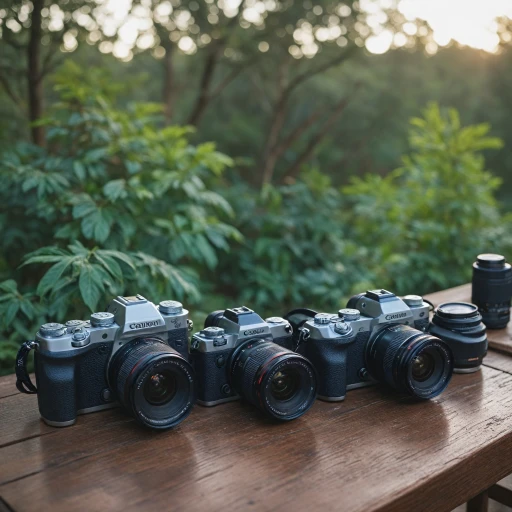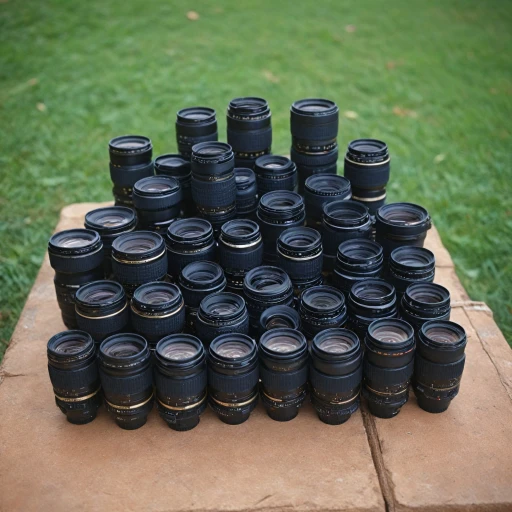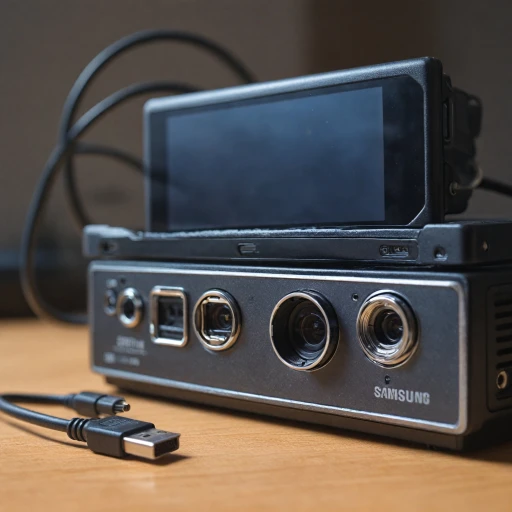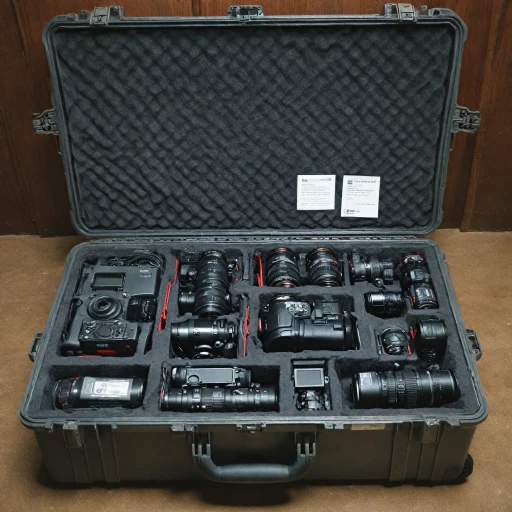
Understanding the Minolta Maxxum 5000
Getting to Know Your Minolta Maxxum 5000
The Minolta Maxxum 5000 is a classic in the world of film cameras, appealing to both photography enthusiasts and professionals across the United States. As part of the Maxxum series, this camera is valued for its solid construction and innovative technologies that were groundbreaking for its time. Whether you’re capturing moments on film or exploring the depths of SLR cameras, understanding your Maxxum camera's capabilities is crucial for mastering its features.
Unlike modern digital cameras, the Maxxum 5000 offers a unique experience through its film-based operation. The classic essence of using film cameras ensures that each shot is deliberate and requires a strong understanding of camera settings like manual mode and focus. The Maxxum Minolta model features a built-in lens mount system, allowing you to interchange and experiment with different cameras lenses to suit various shooting scenarios. This adaptability is part of what makes it such a great tool for exploring manual photography.
To get the most out of your Minolta SLR, familiarize yourself with the key components, including the manual settings and flash options. Understanding these functions not only enhances your photography skills but also helps you resolve issues when they arise. Minolta cameras, including the Minolta Maxxum, are highly respected for their reliable performance, so mastering the basics will enable you to handle your device like a pro.
For more insights on enhancing your photography with the right accessories, you can explore further by checking out this light stand guide. Such additional equipment can significantly benefit your photographic ventures, especially when paired with a solid understanding of your Maxxum camera.
Why Use a Flash Attachment?
The Advantages of Using a Flash with Your Minolta Maxxum Camera
In the realm of photography, especially with your trusty Minolta Maxxum 5000, a flash attachment isn't just a nice-to-have add-on, it's an essential tool for enhancing your photographic creations. You might ask, why? Let's delve into the specifics. The Maxxum camera series, known for its innovative features, provides flexibility and control in various shooting environments. Integrating a flash ensures your photos are well-illuminated, even in settings where natural light is scarce or insufficient. Here are a few benefits:- Improving Indoor and Low-Light Photos: The built-in flash often isn't enough in dimly lit spaces. A separate flash unit can dramatically brighten scenes, reducing the risk of unattractive shadows.
- Adding Dimension: By strategically positioning your flash, you can sculpt the light around your subject, adding depth and texture that naturally enhances their features.
- Freezing Motion: With the right flash power and SLR Minolta settings, you can capture high-action shots without blur, especially important if you're shooting with film cameras where immediate feedback isn't available.
- Creative Flexibility: Using a manual mode on your flash unit allows for experimental, creative angles and effects, helping you depict your subjects in distinctive ways.
Choosing the Right Flash Attachment
Finding the Ideal Flash for Your Minolta Maxxum 5000
When it comes to using the Minolta Maxxum 5000, pairing the right flash attachment can dramatically elevate your photography. With a plethora of options available, selecting the most suitable flash can seem daunting. Here's how you can identify the best flash for your camera:- Compatibility: Ensure that the flash unit is compatible with your Minolta Maxxum 5000. Since this is an SLR camera from a specific series, it’s essential to match the mount and connection interfaces properly.
- Power Output: Opt for a flash whose power output can handle various lighting scenarios. Look for adjustable power settings, which can provide you more flexibility when using manual mode or auto settings.
- Flash Sync: Investigate the flash sync speed of the Minolta Maxxum to choose a compatible flash that can synchronize effectively with your camera’s shutter speeds.
- Portability and Functionality: Consider the size, weight, and additional features such as a built-in diffuser or bounce capability. A flash that’s compact and easy to carry is ideal for quick shoots or travel photography.
- Budget and Reviews: Your budget will inevitably guide your choice. However, investing in a quality piece can offer lasting benefits. Check user reviews and forums for feedback on specific flash models that work well with Minolta cameras.
Attaching the Flash to Your Camera
Securing Your Flash Attachment
Efficiently setting up your flash on your Minolta Maxxum 5000 is crucial to getting those perfect shots, especially when using film cameras where spontaneity and precision matter. The Maxxum series offers a mount specifically designed for flash attachments, ensuring minimal fuss during installation. To attach the flash, you'll want to begin by turning off all devices to prevent any electrical issues. This simple precaution helps avoid accidental damage to your equipment. Next, locate the flash mount on top of your Maxxum camera. The mount is a stable platform specifically crafted for Minolta flashes, providing a reliable connection. Align the foot of the flash with the mount and gently slide it into place. You should hear or feel a click, which indicates a secure fit. The great thing about Maxxum Minolta cameras is that they are designed for ease of use, so this step should be straightforward. After you've attached the flash, it's important to ensure it's working seamlessly with your camera. On some Minolta cameras, the built-in flash will automatically disable when an external flash is connected, so remember to switch your focus from the built-in settings. For those using manual mode, adjusting the focus manually after the flash is attached can offer greater control over the final image. Keep in mind that these SLR cameras deliver the best performance when every component, including the flash, is properly set and aligned. In case you need additional stability or flexibility with your flash, consider using a cable to position it remotely. This setup not only opens window to creative angles and lighting but also reduces the likelihood of the flash harshly bouncing off reflective surfaces. With these steps, you'll find securing your flash to be a straightforward process, allowing more time to concentrate on what SLR photography is truly about—capturing great moments with precision and clarity.Adjusting Flash Settings for Optimal Results
Unlocking the Perfect Flash Balance
Achieving the ideal flash setting on your Minolta Maxxum 5000 can make a substantial difference in your photography. Whether you're using a Minolta flash or another, mastering flash adjustments opens a world of possibilities for your shots, especially when working with film cameras like the Maxxum Minolta series. First, understanding the lens and camera settings is essential. You'll want to ensure that your Maxxum camera is set to the appropriate mode to accommodate the flash. This might be manual mode, where you have greater control over your camera's operations, or a pre-set mode that integrates flash and ambient light effectively. It's crucial to note that not all scenarios call for the same flash intensity. Adjusting the flash output is a fine art; too much flash can create harsh shadows, while too little might not adequately illuminate your subject. Begin by using the built-in flash settings, then gradually fine-tune the exposure by adjusting the flash compensation setting. This technique allows you to maintain the correct exposure balance and achieve a great shot. Some common issues you might encounter include red-eye effect or underexposed shots. If red-eye is a recurring problem, consider using a red-eye reduction mode or bouncing the flash off a surface to soften its impact. Underexposure can often be rectified by ensuring your camera opens the aperture wider, allowing more light to hit the film. Also, remember to respond to the environment in which you’re shooting. Low-light conditions or subjects in motion may require different flash settings. Utilizing a sync cable with your flash can also help align the timing and lead to better outcomes. Finally, make sure to always carry your camera manual, as it will offer detailed advice tailored specifically to your Minolta Maxxum 5000. Embracing these nuances not only improves your technical proficiency but also widens your creative scope, turning even a simple film camera into a comprehensive tool for photographic exploration.Troubleshooting Common Flash Issues
Dealing with Flash Issues on the Minolta Maxxum 5000
Experiencing problems with your flash can be frustrating, especially when trying to capture the perfect moment with your Minolta Maxxum 5000. Here are some common issues you might encounter and tips on how to remedy them:- Flash Not Firing: Ensure that the flash attachment is securely mounted on the camera's hot shoe. You should hear a click when it's properly attached. If the problem persists, check that the flash unit's battery is charged and properly inserted.
- Incorrect Flash Exposure: Your maxxum may need adjustments in the manual mode for better control. Check your camera settings and ensure the correct exposure settings are selected based on your environment. Using the right focus and lens combinations can also help.
- Red-Eye Effect: This common issue in slr minolta cameras can be minimized by utilizing the built-in red-eye reduction feature or by adjusting the angle of the flash slightly off-axis from the lens.
- Flash Sync Issues: Compatibility can sometimes be a concern. Make sure you are using a compatible minolta flash designed for the Maxxum series. If you're using a third-party flash, a sync cable with the appropriate mount may solve sync problems.
- Overheating: Continuous use of the flash can lead to overheating. Give your flash a break between shots to prevent it from malfunctioning. This not only ensures great results but extends the lifespan of your equipment.












